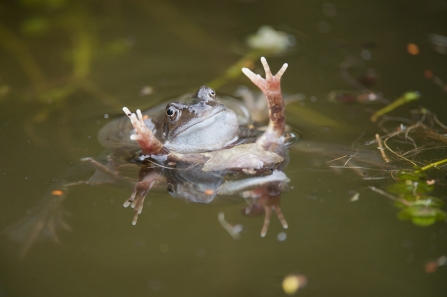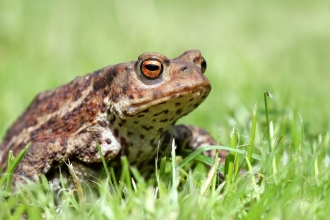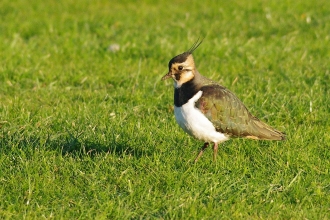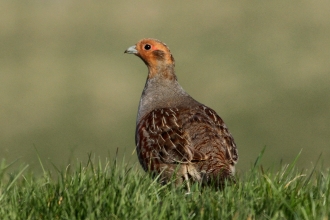Fresh water is in short supply on the hill tops of the Yorkshire Wolds
A dew pond offers an oasis for wildlife in this otherwise dry, chalk landscape. Scattered across the rolling hills, these ponds provide a vital source of water for a wide range of wildlife.

Common frog credit © Mark Hamblin
Beneath the surface
Look beneath the surface and dew ponds team with life. Backswimmers, water beetles, diving beetles and leeches all make their home here.
Many invertebrates require fresh water to lay their eggs and for their offspring to grow and develop. Some of these offspring are formidable hunters like dragonfly nymphs and diving beetle larvae which feed off smaller invertebrates and tadpoles.
The larva of many land insects including midges, mosquitoes and flies, start life in ponds. These provide a rich source of food for other wildlife such as amphibians, birds and bats.
Amphibians
Smooth newts are a common sight in these ponds during spring and summer as they return to breed. The males develop a wavy crest along their backs for the breeding season. Newts carefully wrap their eggs in the leaves of aquatic plants.
Frogs and toads also use these ponds to breed. Despite its name the Common Toad is no longer as common as it once was. These charismatic creatures can still be found in the Wolds and in spring they return to the ponds to lay long strings of spawn. Later in the summer the pond edge crawls with tiny toadlets emerging for the first time from the water.
Farmland wildlife
Farmland bird species such as the tree sparrow, yellowhammer, lapwing and grey partridge have seen a dramatic decline in numbers since in recent years. Dew ponds help support these birds on the Wolds, providing fresh water and rich feeding grounds for young birds amongst the shallow waters edge where insects are plentiful.
On a calm sunny day dragonflies and damselflies flit about above the ponds whilst swallows swoop catching insects. Roe deer and brown hare visit the ponds to drink and small mammals make their home in the grassy pond banks.













